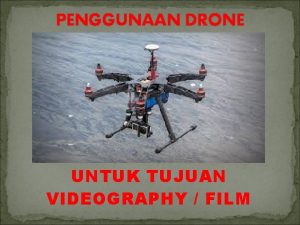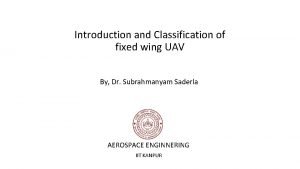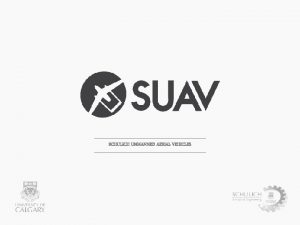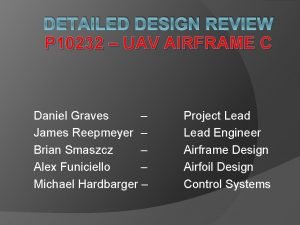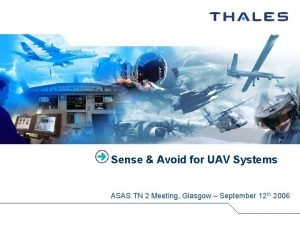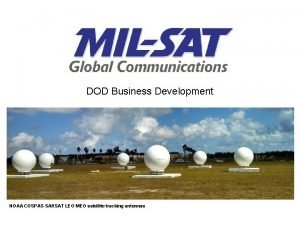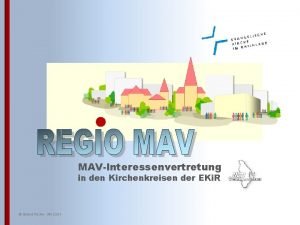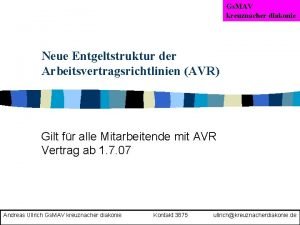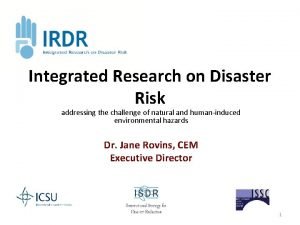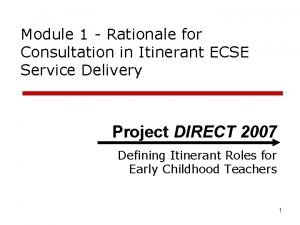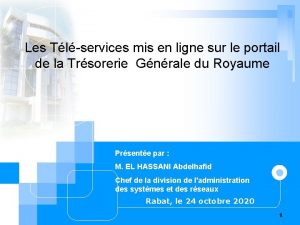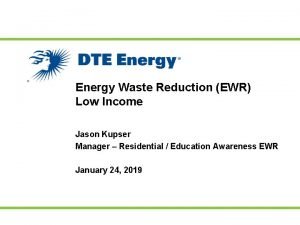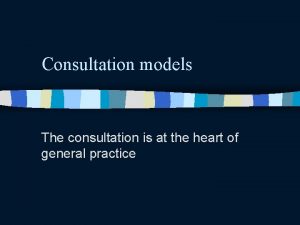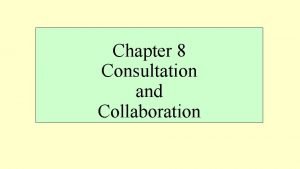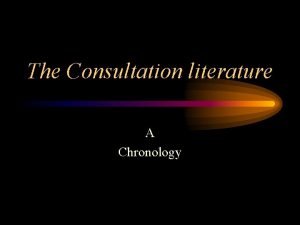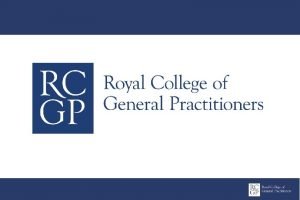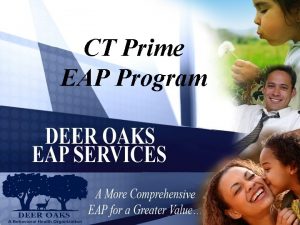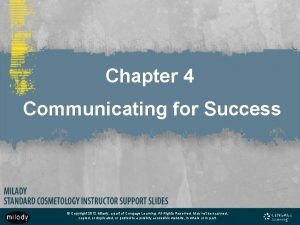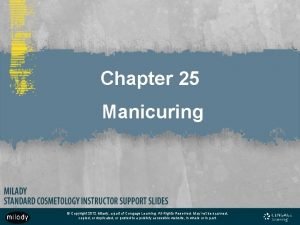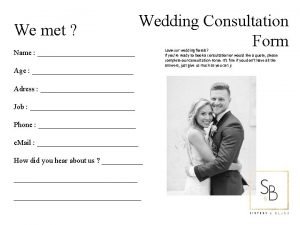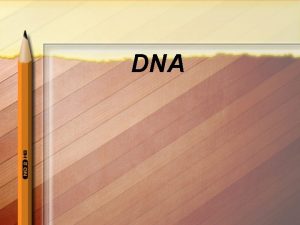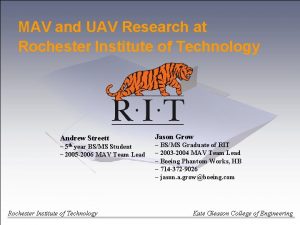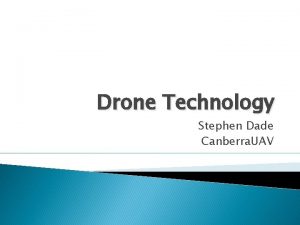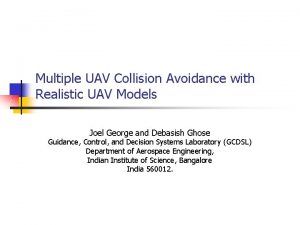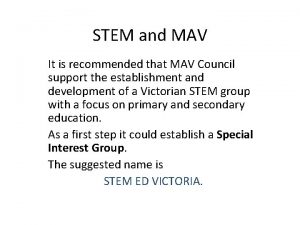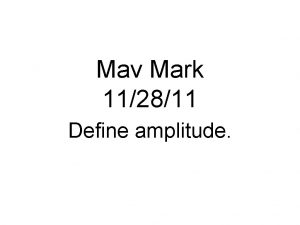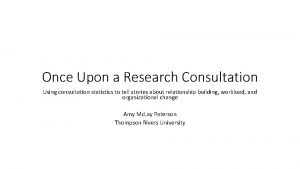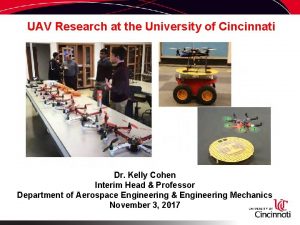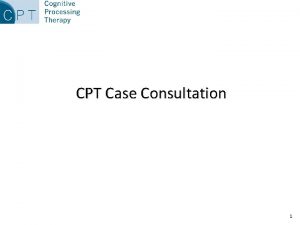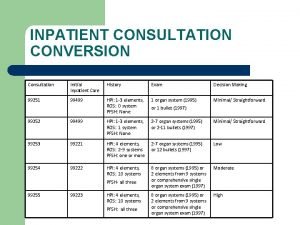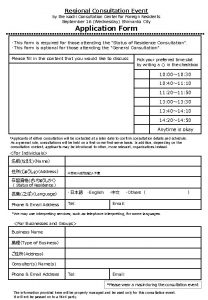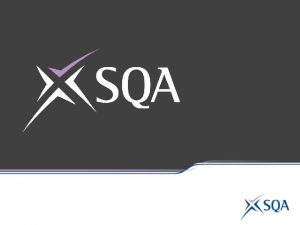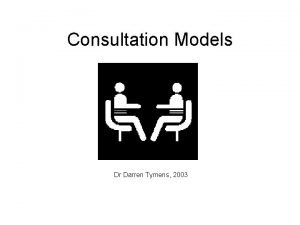UAV Research International Providing integrated consultation to MAV


































- Slides: 34

UAV Research International “Providing integrated consultation to MAV project engineers at Eglin AFB” Chris Mc. Grath Neil Graham Alex von Oetinger John Dascomb Sponsor : Dr. Gregg Abate December 6, 2005

OVERVIEW § § § § Problem Statement Design Specifications Project Planning Design Selection Procedure for Design Cost Analysis Spring Proposal Conclusion

Problem Statement § To design a means of testing MAV flight dynamics in an indoor facility

Project Specs § Weight 100 – 200 grams (g) § Flight Speed 0 – 25 meters per second (m/s) § Exterior Material Carbon Fiber Composite § Wing Tip Length 15 – 30 centimeters (cm) § MAV Flight Control Both 2 and 3 axis § Type of Thrust Pusher, Puller, None

Design Selection: Free Flight Wind Tunnel § The free flight wind tunnel has been successfully created before § Design is basically a conventional wind tunnel modified to allow for actual free flight of the test subject § Force balance achieved around the center of gravity of the MAV, essentially canceling out the force from the incident wind tunnel flow with the thrust of the engine

Project Planning § Final design analysis divided into 3 section: – Tunnel geometry § Design of wind tunnel ducting § Selection of fan flow § Settling screen and honeycomb selection – Instrumentation § Onboard measurement § Data collection/display – MAV handling § Control and release of the MAV inside the tunnel

Project Planning: Flow Chart

Design Procedure § Design Procedure is broken down into five main sections: – Wind Tunnel Design – Flow Quality – Flow Fan – Instrumentation – MAV Handling

Wind Tunnel Design § In wind tunnel design Three properties are most important to consider: – Test section Dimensions – Flow quality – Tunnel geometry

Wind Tunnel Design: Test section Dimensions § At its maximum area, wind tunnel must be 6 times that of the test section § The test section should give ample area for the MAV to fly § For the minimum analysis of the flight, the MAV needs to move laterally or vertically twice its wingspan

Wind Tunnel Design: Test section Dimensions (continued) § For the largest MAV (12” wingspan) to be tested in tunnel we would need 2 feet of flying area in any given direction or roughly a 4 ft x 4 ft test section § When moving longitudinally against the flow we will allow for 10 ft of movement for the MAV

Wind Tunnel Design: Flow Quality § The quality of the flow for our application is based on velocity fluctuations in the direction of the airflow § Need a flow quality that has velocity fluctuations of less than 1% of the free flow § Screens and a honeycomb are implemented to take out the rotational and velocity fluctuations of the flow that form when the air passes through the fan

Wind Tunnel Design: Flow Quality (Continued) § The most important factor to flow quality is the contraction ratio § The larger the contraction ratio, the slower the air flow is when it passes through the screens and honeycomb § For a contraction ratio of 6, combined with the screens and honeycomb, we can achieve a flow quality of less than 1%

Wind Tunnel Design: Tunnel Geometry § Two different tunnel Geometries are explored – Ideal wind tunnel – Constrained wind tunnel

Wind Tunnel Design: Tunnel Geometry – Ideal tunnel § Larger tunnel overall § Utilizes full test section and contraction ratio § Implements a 4. 5*4. 5 ft test section to compensate for Boundary phenomenon ( only 80% of area is usable) § Test section has length of 10 ft

Wind Tunnel Design: Tunnel Geometry – Ideal tunnel (continued) § *ADD ADDITIONAL INFO*

Wind Tunnel Design: Tunnel Geometry – Constrained tunnel § Designed to fit inside the space currently provided at Eglin AFB (room measuring 40 x 30 x 15 ft ) § Only aspect of the ideal tunnel that is too large for the room is the tunnel length § Need to shorten the tunnel by 21. 3 ft

Wind Tunnel Design: Tunnel Geometry – Constrained tunnel (Continued) § *ADD ADDITIONAL INFO*

Flow Quality § Flow quality will be of paramount importance in tunnel design

Free Flight Diagram

Wind Tunnel Geometry § Area required to fly 4 ft x 4 ft § Test section area is 4. 5 ft x 4. 5 ft § Test section length greater than 10 ft

Wind Tunnel Geometry § Fan Specifications – Mass flow rate: 60. 8 kg/s – Ideal power needed: 50 hp – Diameter of fan: 7. 1 ft

Wind Tunnel Geometry § Final Expansion – Final area is 8 times test section area

Wind Tunnel Geometry

Tether System § Tether Location § Tether Restraint and Release System § Tether Reel

Tether Location § Above and below MAV’s center of mass

Restraint and Release System § Tether Clamp

Tension Reel § Miyamae's Command X-1

Instrumentation § Onboard § Flow Measurement § Data Collection Software

Onboard Instrumentation § Kestrel Autopilot – 16. 65 grams (2” x 1. 37” x. 47”) – Three-axis rate gyros – Accelerometers – Air pressure sensors

Flow Measurement § Pitot-Static Tube § Hot-Wire Anemometer

Data Collection Software § Virtual Cockpit § Labview

On-Going Activities § Source the Fan § Find manufacturer to produce settling screens § Create Bill of Materials § Build Pro-E model of system

 Pengertian drone
Pengertian drone Classification of uav
Classification of uav Schulich uav
Schulich uav Uav airframe design
Uav airframe design Uav
Uav Satellite uav
Satellite uav Video xxx de juan herrera y mav
Video xxx de juan herrera y mav Gesa mav ekir
Gesa mav ekir Mav
Mav Mavprint mnsu
Mavprint mnsu Mav local government
Mav local government Spetzler martin
Spetzler martin Trading mav
Trading mav Uta mav orgs
Uta mav orgs Westlawe
Westlawe Integrated research on disaster risk
Integrated research on disaster risk Client centered case consultation
Client centered case consultation Humana agent near me
Humana agent near me Triadic consultation
Triadic consultation Tgr portail
Tgr portail Dteenergy.com/hec
Dteenergy.com/hec Consultation skills for pharmacy practice
Consultation skills for pharmacy practice Neighbour model of consultation
Neighbour model of consultation Helman consultation model
Helman consultation model Collaboration vs consultation
Collaboration vs consultation Balint model of consultation
Balint model of consultation Practice standards for consultation skills
Practice standards for consultation skills Bradford vts consultation models
Bradford vts consultation models Deer oaks consultation services
Deer oaks consultation services Behavioral consultation
Behavioral consultation How should you handle tardy clients
How should you handle tardy clients Milady basic manicure steps
Milady basic manicure steps Home buyer consultation
Home buyer consultation Wedding consultation form
Wedding consultation form Consultation skills for pharmacy practice
Consultation skills for pharmacy practice
